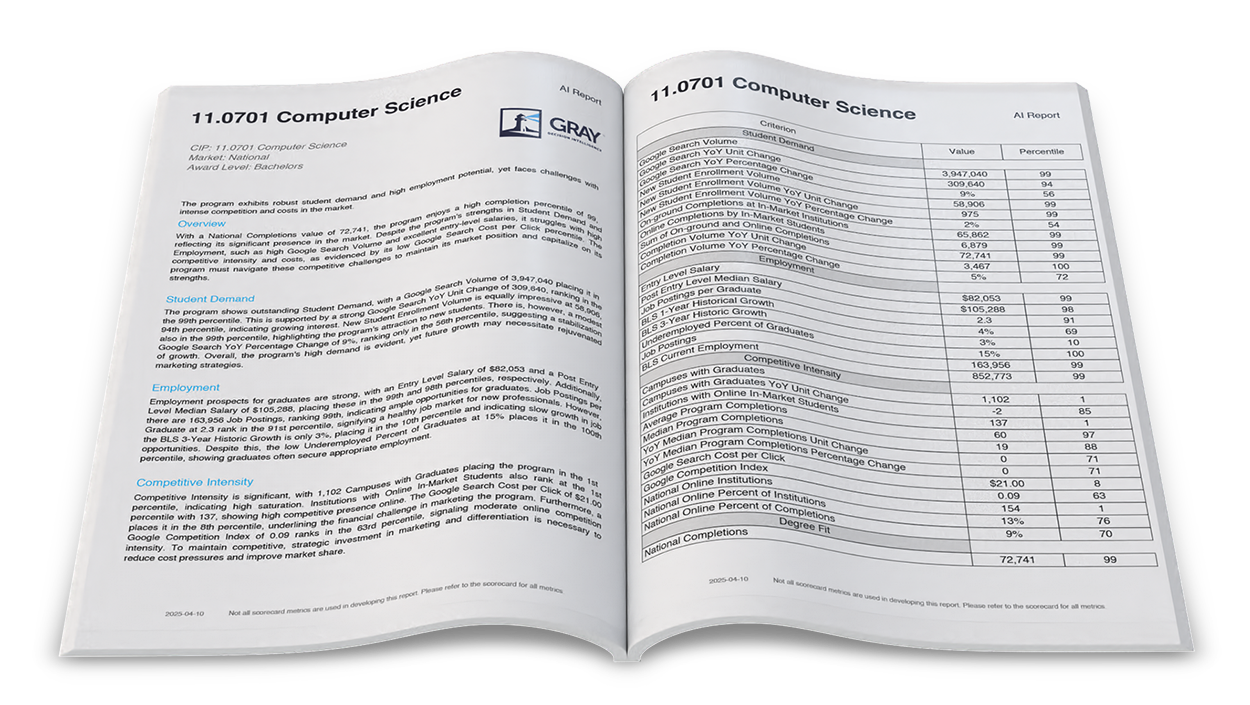As we at Gray continue to sort through the recently released 2019-2020 IPEDS data, we believe it’s important to examine trends at both the macro and micro levels. In this post, we’ll be looking at trends at the discipline level, or 2-digit CIP code.
The most compelling data is found in 5-year growth trends:
Percentage Growth in Completions: 2015 vs. 2020
The largest percentage jump here is in Military Technologies, but this discipline is relatively small, with the lowest number of completions of all disciplines. So while completion volumes grew 62% percent from 2015 to 2020, this represents fewer than 1,500 additional completions. More compelling here is that Computer/Information Sciences, a perennial Top 5 in national completion volumes, grew 41% from 2015 to 2020. This was an impressive unit growth of almost 69,000 completions. Several other STEM fields, such as Mathematics and Science Technologies, join Multi/Interdisciplinary Studies in the Top 5 for percentage growth in completions.
Looking at overall unit growth by completions underscores Computer Science’s continued surge.
Unit Growth in Completions: 2015 vs. 2020
The only overlap we find in both percentage and unit growth underscores one of the primary takeaways from this data: Computer/Information Sciences continues to be the fastest-growing discipline in higher education. Also of note here is the growth of Liberal Arts and Sciences completions. Despite persistent speculation on the demise of Liberal Arts, the data show otherwise. However, it should be noted that the vast majority of growth is at the Associate’s and Certificate level.
What’s happening in the other direction? Often, the data on what disciplines are shrinking can be just as revealing.
Percentage Negative Growth in Completions: 2015 vs. 2020
Completions of Transportation and Materials Moving programs, covering everything from Air Traffic Controller to Forklift Operator, showed the largest percentage decline in completions from 2015 to 2020, at 27%. Of interest here is that two stalwarts of traditional education, English and History, are among the Top 5 disciplines with the largest percentage reduction in completions. Coupled with our completions and growth data, this indicates that more students are heading toward STEM/CS programs.
To conclude, an examination of overall 2020 completions data reveals nothing new.
There’s no breaking news here. The top three disciplines, Health Professions, Business, and Liberal Arts, have remained the same for ten straight years. However, we’ll be watching Computer Science as a discipline in the coming years to see just how high it will ultimately ascend in these rankings.
We will continue to explore the new IPEDS data in coming blogs, including more detailed examinations of program and award level trends. Stay tuned.





